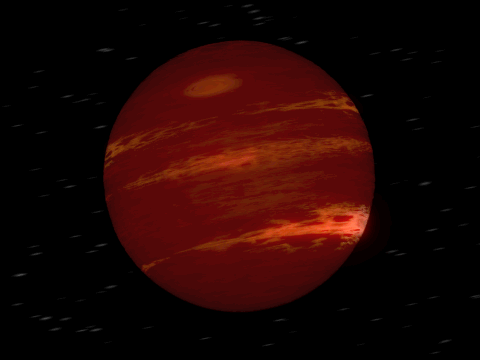
An animated gif shows the artist’s interpretation of a brown dwarf with clouds.
NASA/JPL-Caltech
Failed stars can end up with weather more turbulent than gas giant planets — and NASA JPL researchers are now getting a peek into how and why.
Brown dwarfs are objects that formed like stars and gained quite a bit of mass, but failed to begin fusing hydrogen into helium. Some can be quite hot, while others are remarkably cool. Researchers have studied the weather patterns on these massive objects (up to 70 times the mass of Jupiter), discovering weird cloud patterns that bulge up and dissolve throughout the course of an Earth day.
JPL researchers found that gravity waves in the atmosphere are pushing material through bands of clouds. Stars act more like boiling, bubbling cauldrons, so this is more akin to behavior seen on Jupiter or Saturn.
This finding complicates the identity of brown dwarfs. They form like stars, gas envelopes that gradually compress in, whereas planets start with a rocky core and accumulate mass. But they also have storms and banded clouds, giving them behaviors that act much more like giant planets.
So the mystery of how these storms move has been solved. But brown dwarfs still have plenty in store for us to discover.









